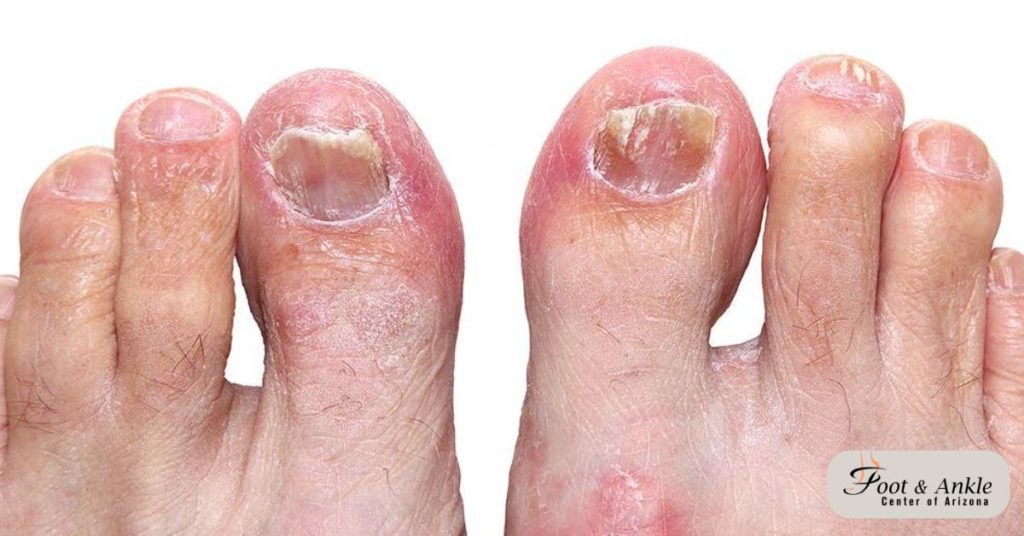A toe infection can be quite painful, and if not treated right, may lead to further health complications. Ranging from ingrown toenails to fungal infections and bacterial invasion, it is critically important how you manage and administer treatment for these varied conditions. In this guide, we will discuss everything you want to learn about getting rid of a toe infection, pinpointing the symptoms, using home remedies, and when to see a doctor.
Common Causes of Toe Infections
Ingrown Toenails:
An ingrown toenail occurs when the edge of the toenail grows into the surrounding skin, which may result in painful, swollen, and sometimes infection.
Fungal Infections:
Fungal infections like athlete’s foot can affect toenails, resulting in thickened, discolored, and brittle nails.
Bacterial Infections:
Organisms can get through cuts, scrapes, or punctures of skin to cause redness, swelling, or formation of pus.
Pain and Tenderness:
Pain and tenderness are the major signs of the infection at the beginning.
Redness and Swelling:
This usually results in redness and swelling of the infected toe area.
Pus Under the Toenail:
There may be an accumulation of pus under the toenail or near the area that has been affected.
Oozing Ingrown Toenail:
The ingrown toenail drains pus or other fluid.
Home Remedies for Toe Infection
1. How to Soak Infected Toe
Soak your infected toe to help alleviate pain and swelling, encouraging the process of drainage. Steps to soak your toe are as follows:
Epsom Salt with Warm Water Soak: Mix a tablespoon of Epsom salt in warm water. Soak your foot in it for 15-20 minutes, 2-3 times a day.
Apple Cider Vinegar Soak: Mix equal parts of apple cider vinegar and warm water. Soak your toe for 15 to 20 minutes. Apple cider vinegar is antibacterial in nature, so this helps combat the infection.
2. How to Drain an Infected Toe
In case you see pus accumulated under the toenail or even an ingrown toenail oozing out pus, it suggests that you may have to drain your infection. Here’s the step-by-step method to do it. Sterilize a Needle: Sterilize a needle using alcohol.
Clean the Toe: Wash your toe and dry it with soap and water.
Piercing the Infected Part: Carefully puncture the center of the pus, as visible, to allow the pus to come out.
Clean and Dress: Clean again and apply antibiotic ointment over the affected area. Then put a sterile bandage over it.
3. Other Home Remedies
Tea tree oil: Apply the tea tree oil to the area of infection, mixed with a carrier oil such as coconut oil to a diluted solution. A little antiseptic property is there in the tea tree oil.
Hydrogen peroxide: Soak your toe in hydrogen peroxide mixed with water to get disinfection done in the area.
When to Seek Medical Help
Though home remedies can serve your minor infections well, knowing when to visit a professional is very important. Consult with your doctor in case you experience the following:
Severe pain and swelling: If the pain and swelling are very serious and not relieved by home treatment. Infection Spreads: If the infection has flared up beyond the toe. Fever and Other Symptoms: If you develop fever or any other systemic symptoms.
Chronic Conditions: If you are prone to diabetes or any other systemic circulation problem, consult your doctor at the first sign of trouble.
Preventing Toe Infections
Preventing future infections of the toes can be best achieved by taking precautionary steps. Here are a few:
Proper Nail Care: Clip toenails straight across and not too short.
Foot Hygiene: Feet must be kept clean and dry. Change socks frequently and allow shoes to be dry between wear.
Avoid shoes that are too tight. The shoes should be wider and longer than your foot.
Protect your Feet Always wear protective shoes or sandals in public places, gyms, pools, and showers to protect your feet and keep fungal infections away from your feet.
Most Common FAQs
1. What are the common causes of an infected toe?
An infected toe can result from cuts, ingrown toenails, fungal infections, or bacterial invasion. Poor foot hygiene or wearing tight shoes can also increase the risk of a big toe skin infection or other toe infections.
2. How can I provide effective toe infection treatment at home?
Toe infection treatment can start with soaking the infected toe in warm water with Epsom salt or apple cider vinegar. Applying antiseptics like tea tree oil or hydrogen peroxide can help, but persistent or severe infections may require professional care.
3. How do I heal an infected toe with pus?
If your infected toe pus is visible, careful cleaning, sterilization, and gentle drainage can help. Apply an antibiotic ointment and cover with a sterile bandage. Always seek medical attention if pus continues to accumulate or the infection worsens.
4. When should I see a doctor for infected toe treatment?
Consult a doctor if your infection toe shows severe pain, swelling, spreading redness, fever, or is linked to chronic conditions like diabetes. Professional infected toe treatment may include antibiotics or minor procedures to prevent complications.
5. How can I prevent future toe infections?
Prevent toe infection by maintaining proper foot hygiene, trimming nails straight, wearing breathable shoes, and protecting your feet in public areas. Early care for cuts or ingrown nails can also reduce the risk of big toe skin infections.
Conclusion
Toe infections are surely painful and troublesome to bear. Still, with proper care and attention, they can be managed well. Try and apply the following tips and remedies, which will reduce the risk of infection and enhance the healing process. If you continue to be in the worst of symptoms, return and visit a doctor; if anything is wrong, the doctor should be visited. At the Foot and Ankle Center of Arizona, we are here for your foot and ankle health needs. Call us now at +1 480.342.9999 to schedule an appointment or learn more about our services.




